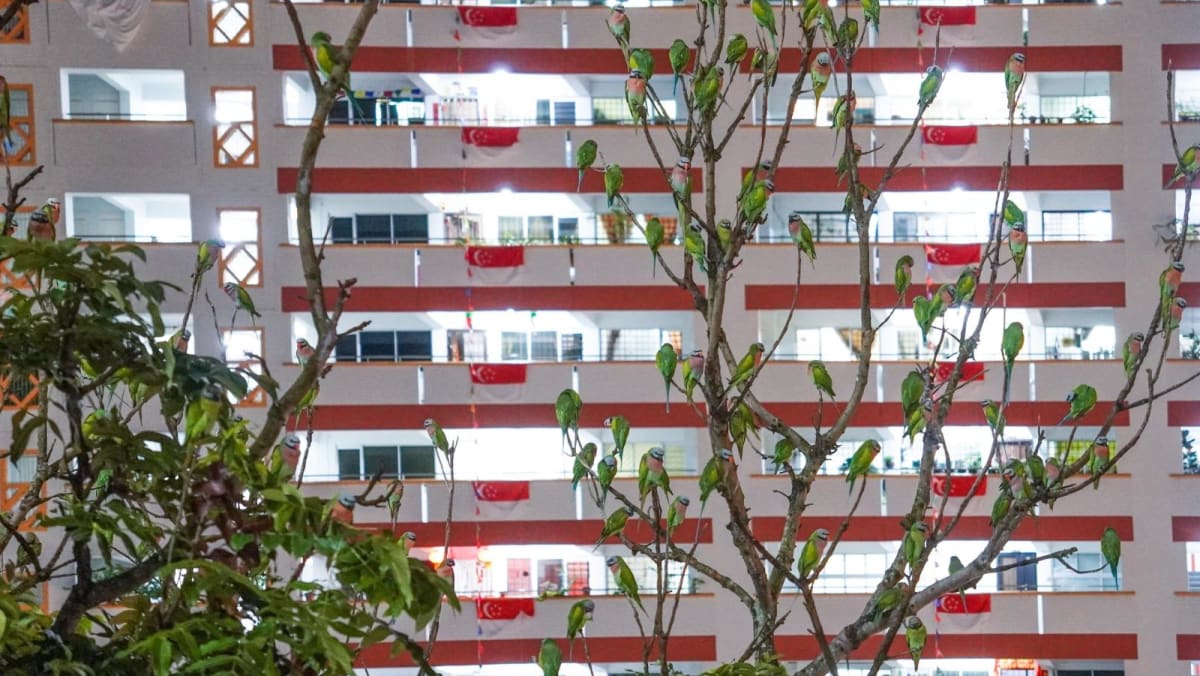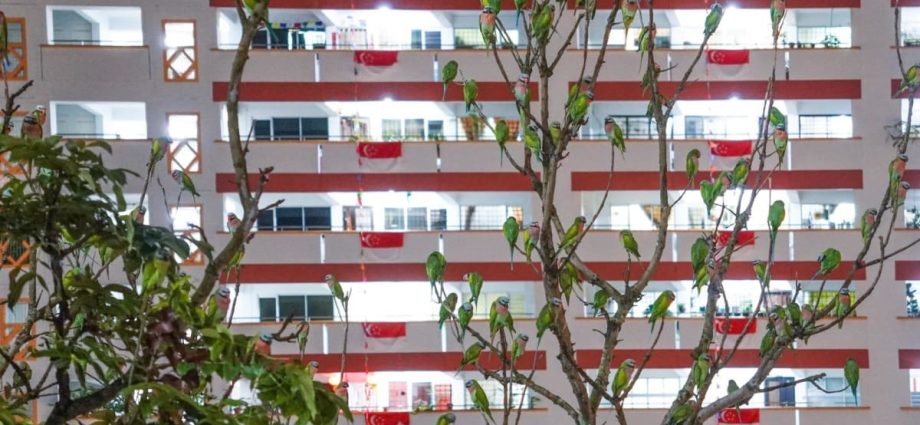
LARGE FLOCKS IN HOUSING ESTATES
On why they roost in specific areas in the west of Singapore, Dr Yong suggested that it was because of the proximity to forested areas.
“The birds are able to thrive in secondary woodlands in Singapore, like those you see in the Rail Corridor, Tengah, Kranji and Lentor. They can find food and nesting resources in these areas. And these woodlands are not so different from their open forest habitat in Cambodia or Thailand.”
Their large numbers have posed problems in Choa Chu Kang, where the town council and NParks caught and culled some birds in November last year, as reported by the Straits Times.
In response to CNA’s queries, NParks said it received 79 cases of feedback on parakeets between 2020 and 2022. About half of these were sightings and reports of animals requiring rescue.
As with invasive species, a hike in the number of red-breasted parakeets has implications for the ecosystem.
“Being a non-native species, the red-breasted parakeets may negatively impact native biodiversity when present in large numbers, by competing with our native bird species for food and nesting sites,” said NParks’ group director of wildlife management Ryan Lee.
“They may also indirectly affect native biodiversity through the transmission of exotic diseases and parasites.”
Dr Yong agreed, saying that red-breasted parakeets compete with local species such as hill mynas, long-tailed parakeets, hornbills and common goldenback woodpeckers for tree cavities to nest.
“There’s heavy competition for the nest holes. So many birds need the nest holes but so few bird species build (them).”
Dr Yong cautioned about another non-native parakeet species that appeared to be an “emerging problem”. The monk parakeet, also green in colour, has colonies in Pasir Ris and Changi and is a highly invasive species, he said.
While non-native parakeets may be a threat to local birds, they do not enter human premises to scavenge for food.
“So from a human disturbance point of view … it is not as major an issue as crows and mynas, but from an ecological point of view there are real and tangible problems,” said Dr Yong.
“The (red-breasted) parakeets have reached a level of population that they can never be eradicated. They are established in the Singaporean ecosystem permanently and have spread to nearby areas of Malaysia.”
NParks cautioned the public against releasing animals or pets into the wild. It also said that releasing an animal into a nature reserve or a waterway that flows into or through a nature reserve is an offence.

